9,000-year-old skeletons reveal the ‘curse’ of the ancient city of Çatalhöyük
Çatalhöyük, located in southern Turkey, is known as one of the earliest settlements of mankind, with a flourishing history dating back to 7100 BC. However, after about 1,000 years of existence, this city mysteriously collapsed, falling silent and leaving behind many unanswered questions until now.
Recently, an international research team led by Professor Clark Spencer Larsen (Ohio State University, USA) has lifted some of the veil of mystery surrounding Çatalhöyük through the analysis of 742 skeletons excavated there. This discovery provides chilling evidence of the “curse” that fell upon the city, taking the lives of its inhabitants and leaving it in ruins.
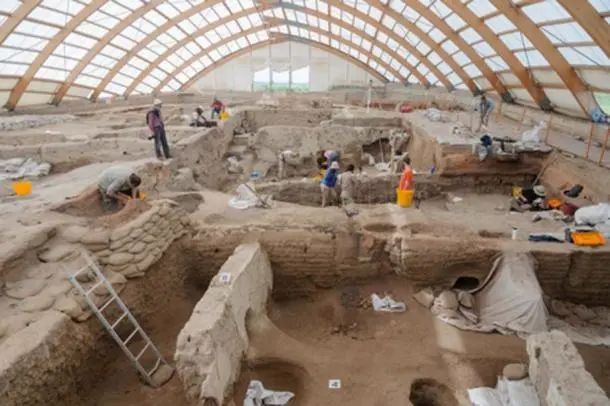
The findings of the new report are based on 25 years of studying human remains unearthed at Çatalhöyük.
A trip back in time to Çatalhöyük
Catalhöyük was inhabited by people from about 7500 BC to 6200 BC. This sprawling city encompassed over 8,000 houses, built from mud brick and wood. The houses were built close together, creating a maze of alleys and courtyards. Catalhöyük was discovered in 1951 by Turkish archaeologist James Mellaart. Since then, excavations have unearthed a treasure trove of information about the life of the Catalhöyük people.
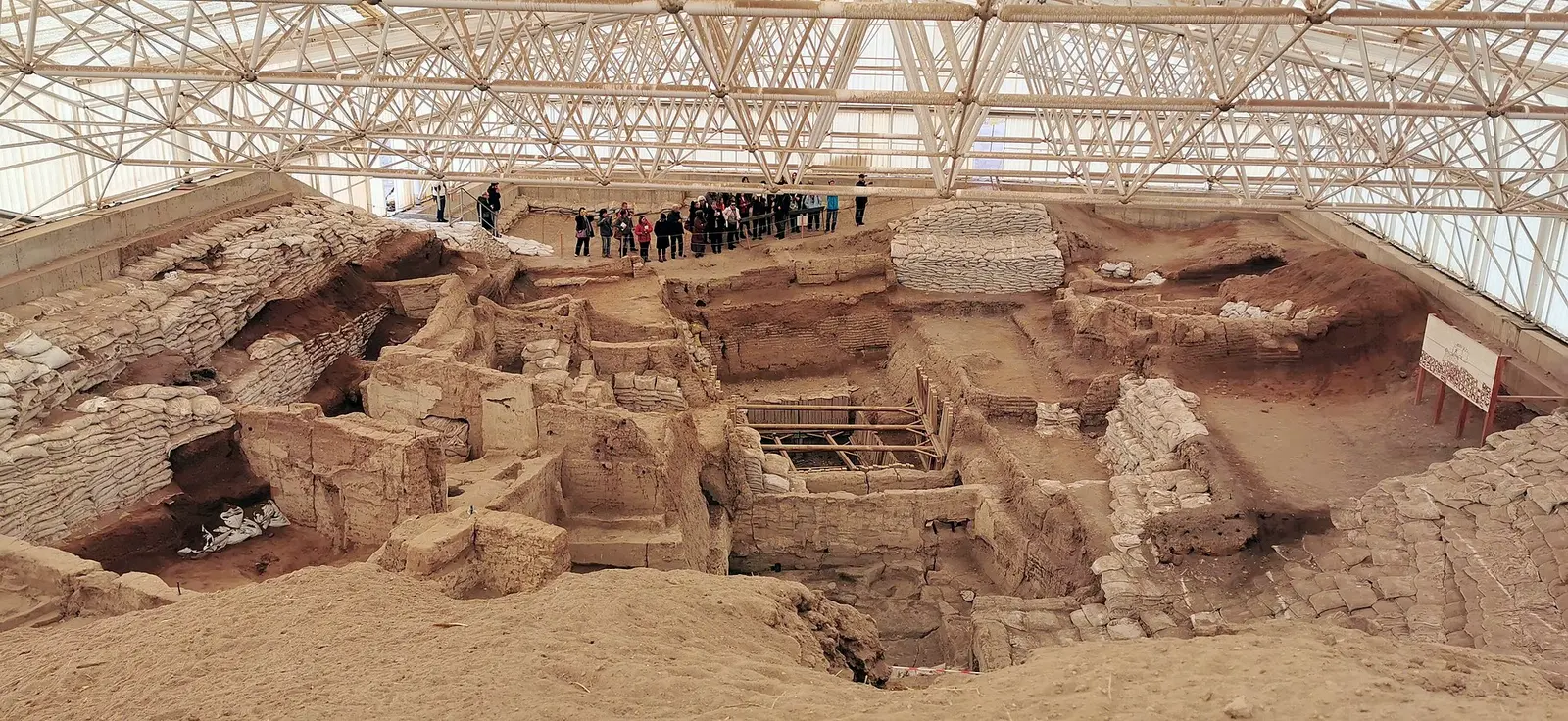
Population 5,000 – 7,000. A large number of buildings were clustered together. The inhabitants lived in adobe houses. There were no paths or streets between the dwellings. Most were accessed through holes in the roof and doors in the sides of the houses, which were reached by stairs and ladders.
The Çatalhöyük people thrived as skilled farmers and craftsmen. They grew crops and raised livestock, while creating impressive pottery, jewelry, and figurines. Their society was complex, with a potential elite class, and their beliefs centered on nature deities and rituals such as animal sacrifice and burial of the dead.
Discovering the silent witnesses
Meticulous examination of the 742 skeletons unearthed at Çatalhöyük has revealed a disturbing pattern of violence. A shockingly high mortality rate, particularly during the city’s peak period, paints a grim picture of a society plagued by conflict. Telltale signs of trauma – severe skull fractures inflicted by blunt objects – are etched into the remains, attesting to the brutality that engulfed Çatalhöyük.
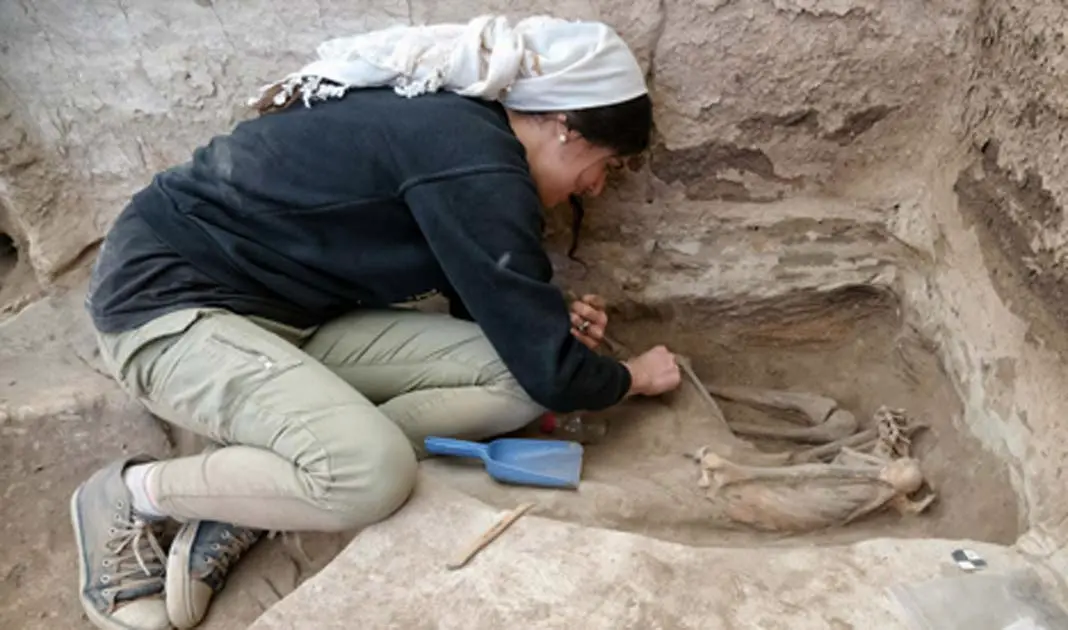
A researcher excavates an adult skeleton at the Neolithic site of Catalhoyuk in Türkiye.
A detailed analysis of the skeletons revealed an unusually high mortality rate, especially during Çatalhöyük’s golden age. In a sample of 95 skulls from Çatalhöyük, more than a quarter (25 individuals) showed evidence of healed fractures. And 12 of them had been victims more than once, with between two and five injuries over a period of time. The shape of the injuries suggests they were caused by blows to the head with hard, round objects, and clay balls of the appropriate size and shape were also found at the site.
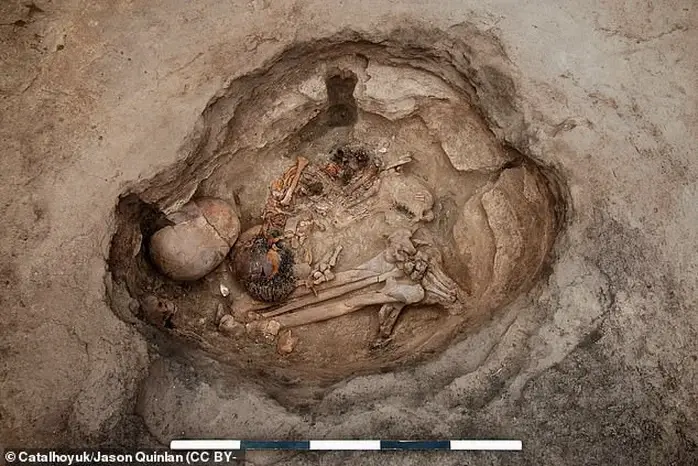
A set of remains with tragic traces
Interestingly, these injuries were not limited to any particular demographic. Men, women, and children alike bore the scars of violence, suggesting that no one within the city was spared from its relentless grip. This widespread violence casts a dark shadow over Çatalhöyük’s final years, hinting at a society on the brink of collapse.
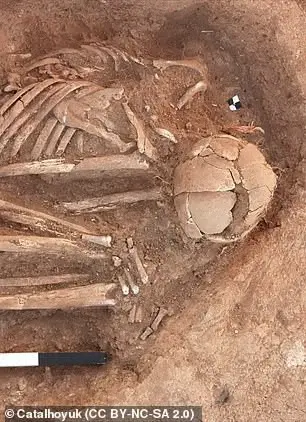
The skull of one of the remains is cracked – photo provided by the research team
Not to mention that 33% of the total 742 remains showed signs of bacterial infection. 13% of the women’s teeth and 10% of the men’s were damaged, indicating that they consumed an unbalanced diet and too many cereals compared to other food groups. Sanitary conditions were extremely poor and walls and floors were highly contaminated with human and animal feces.
Theories behind the tragedy
In an attempt to unravel the forces that unleashed such widespread violence in Çatalhöyük, researchers have put forward a number of hypotheses. One compelling theory suggests that the town’s rapid growth and high population density, with some 8,000 inhabitants crammed into a relatively small area, may have contributed to escalating tensions and social unrest.
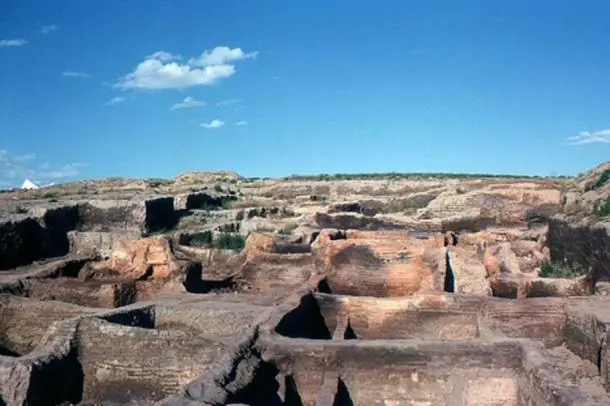
Çatalhöyük after the first excavations by James Melaart and his team.
All the bad conditions, such as overcrowding, food shortages, epidemics… have caused violence in the city. This explains the skull-fractured remains mentioned above: they killed each other out of stress, anger and survival. These tragedies continued one after another and spread further and further like a curse, until the once prosperous metropolis completely collapsed.
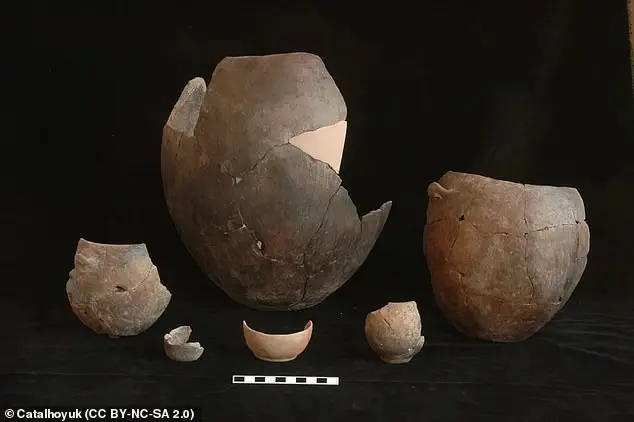
Pottery collected in the ancient city – photo provided by the research team
Environmental factors may also have played a role in Çatalhöyük’s demise. Droughts, resource scarcity or the spread of disease could have exacerbated existing social and economic inequalities, leading to competition, conflict and, ultimately, violence.
The 9,000-year-old skeletons from Çatalhöyük tell a tragic story of the collapse of a great civilization. The “curse” hidden in these skeletons is not only a warning about violence but also a testimony to the fragility of human society in the face of environmental and social change. This discovery makes an important contribution to the study of human history, helping us better understand the past and the challenges our ancestors faced.






